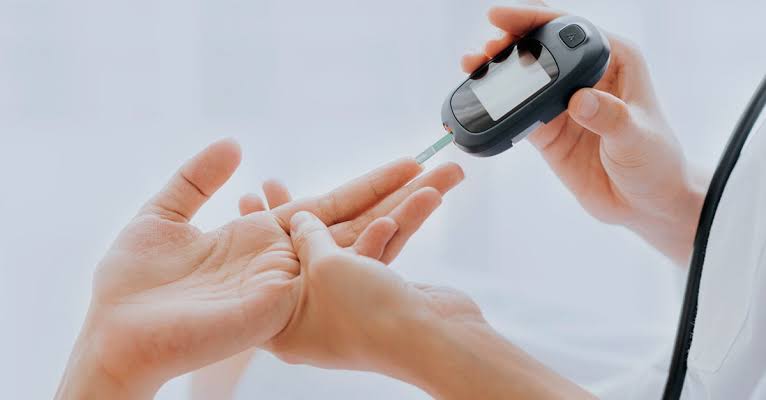Why does diabetes command huge medical attention?

By Adeze Ojukwu
Diabetes is always on the global health radar. Why does this condition command so much attention and research? Many factors are responsible for this worry. The prevalence is escalating, so is its impact, as an underlying cause of amputation, eye disorders, kidney conditions and deaths. Ample research shows that the facts are quite staggering.
“About 422 million people worldwide have diabetes, the majority living in low-and middle-income countries, and 1.5 million deaths are directly attributed to diabetes each year.”
This explains the reason for the exceptional focus by health experts, on this debilitating condition.
World Health Organization(WHO), in its 2022 report, defined diabetes as “a chronic, metabolic disease characterized by elevated levels of blood glucose (or blood sugar), which leads over time to serious damage to the heart, blood vessels, eyes, kidneys and nerves.”
According to the top global health agency the most common is type 2 diabetes, usually in adults, which occurs when the body becomes resistant to insulin or doesn’t make enough insulin.
“In the past 3 decades the prevalence of type 2 diabetes has risen dramatically in countries of all income levels. Type 1 diabetes, once known as juvenile diabetes or insulin-dependent diabetes, is a chronic condition in which the pancreas produces little or no insulin by itself.”
“For people living with diabetes, access to affordable treatment, including insulin, is critical to their survival. There is a globally agreed target to halt the rise in diabetes and obesity by 2025.
“About 422 million people worldwide have diabetes. Both the number of cases and the prevalence of diabetes have been steadily increasing over the past few decades.”
This report calls for urgent personal and governmental response, particularly in Nigeria and the Global South.
The first line of standard treatment is usually based on a physician’s recommendations. Sometimes drugs are introduced for good management.
Exercise and diet are also very important too. Recently massage is being considered, as a good addition to the package.
This alternative therapy may be quite beneficial to the elderly and those that are living sedentary lifestyles.
An article entitled “Does Massage Have Benefits for People With Diabetes?” by Health line highlights the benefits.
It was written by Daniel Yetman and medically reviewed by Dominique Fontaine.
The full text is published below:
The most common complication of diabetes is peripheral neuropathy. Peripheral neuropathy is damage to nerves outside your spinal cord or brain. People with diabetes typically first notice symptoms such as numbness, pain, or tingling in their feet and lower leg.
Although more research is needed, some evidence suggests that massage therapy may help people with diabetes manage neuropathy symptoms. Some studies have also found that massage may help lower blood glucose levels.
In this article, we’ll break down the potential benefits of massage for people with diabetes and examine the latest scientific findings.
Benefits
More research is needed to understand how to best use massage to treat symptoms of diabetes. However, some research has found promising results. Here’s a summary of the latest findings.
Massage may lower blood glucose levels
A 2019 review of studies analyzed research published between 2000 to 2018 examining the potential benefits of massage for managing diabetes symptoms. The researchers found significant evidence that massage may:
• decrease blood glucose levels
• decrease hemoglobin A1C levels
• improve pain caused by peripheral neuropathy
• improve diabetic foot ulcers
Various factors were also found to influence the effectiveness of a massage, such as the: quality, level of pressure, duration, number of sessions, type of massage and mental state of the patient.
Some types of massage may be more effective than others, but more research is needed.
A small 2018 study Source found no changes in blood glucose levels after 12 sessions of a type of massage called foot reflexology.
Massage may help manage peripheral arterial disease
Peripheral arterial disease is when plaque buildup narrows your blood vessels and decreases circulation to your limbs. It commonly occurs in people with type 2 diabetes and increases risk of heart attack and stroke.
One 2011 study found evidence that connective tissue massage can improve circulation in the lower limbs of people with type 2 diabetes, and may help slow the progression of peripheral arterial disease.
Foot massage may improve symptoms of diabetic neuropathy. Roughly 50 percent of people with diabetes deal with peripheral neuropathy.
A 2015 study examined the benefits of Thai foot massage for a group of 60 people with type 2 diabetes. The researchers found that participants given a 30-minute foot massage, 3 times per week for 2 weeks, had significant improvements in their range of motion, ability to stand up from a seated position, and foot sensation, compared to a control group.
A 2017 study also found benefits of foot massage for people with diabetes. In a group of 38 people with type 2 diabetes, the researchers found that foot massage led to increased balance and mobility. However, there was no control group in the study. More research is needed to understand the potential benefits of foot massage in people with diabetes.
Traditional Chinese massage may improve neuropathy symptoms
A 2020 review of studies found that a traditional Chinese medicine foot bath combined with acupoint massage improved symptoms of neuropathy compared to control groups.
However, the researchers also concluded that more research is needed due to the low methodological quality of studies.
Another 2020 review of studies found evidence that Chinese massage, combined with metformin hydrochloride tablets, has a complementary effect that may help reduce the amount of diabetes medication you need.
Side effects and contraindications
Massage seems to generally be safe for people with diabetes and most studies report no serious side effects.
One potential risk is inducing low blood sugar in patients using insulin. One 2011 study found that when children with diabetes were given massage, they had significantly lower blood sugar levels than a control group.
If you decide to go for a massage, it may be a good idea to bring an emergency source of sugar in case you develop low blood sugar. Glucose tablets, hard candy, and juice are easy-to-transport options.
Best massage techniques for diabetes
In the 2019 review of studies that found massage may lower blood glucose levels, the researchers concluded that more studies are needed to clarify the effectiveness of different types of massage.
At this time, research is still ongoing looking at how to best use massage to treat diabetes symptoms. Massage is a complementary therapy, meaning that it may support traditional medical treatment but it shouldn’t be relied on as a substitute.
Some of the types of massage that have been linked to benefits include: Thai foot massage, traditional Chinese massage, Swedish massage and connective tissue massage.
Other types of massage may provide benefits as well. If you choose to get a massage, you can try different types and compare the change in your symptom.
It is quite important to always seek a doctor’s advice, before taking this or any other medical decision.
•Ojukwu a journalist and author, re-published this article, as part of her wellness campaign, in tandem with the SGD Goals on Health.
Send emails to [email protected]





